Montjuic: Treasure Mountain
Exploring the cornucopia of attractions on this coastal rise
By Duncan Rhodes
Take the teleferic (cable car) up to the castle, wander around the Olympic Ring, call by an art museum or two, and finish with a performance at the Magic Fountain. We look at what there is do on Barcelona’s Montjuic mountain, and how to get there.
Montjuic Through The Years…
Jewish Origins
A scenic wooded hill in the South West of Barcelona, rising 173m above sea level in between Plaça Espanya and the commercial port, Montjuic gets its name from the Catalan meaning ‘Jewish Mountain’, and was once the home of the city’s Jewish community.
If you’re wondering, it is pronounced moɲ.d͡ʒuˈik.
A Cursed Castle
Thanks to its raised altitude, the hill was chosen as the site for the Castell de Montjuic fortification, which far from protecting the city in fact bombed it during the 1842 insurrection when Barcelona rose up against the Spanish government in Madrid.
The garrison continued to be a sinister symbol on high for the rest of the century and beyond, serving as a political prison and even a place of execution for dissidents such as Catalan nationalist Lluis Companys who was killed there in 1940 by Franco’s men.
The 1929 International Exposition
Today’s visitor to Montjuic is scarcely likely to feel any of these evil associations as they wonder around the mountain’s cultural treasures, surrounded by woodland, in what has become one of the most attractive areas of Barcelona. In the 1920s the hill was chosen as the site for several exciting new developments in time for the International Fair 1929.
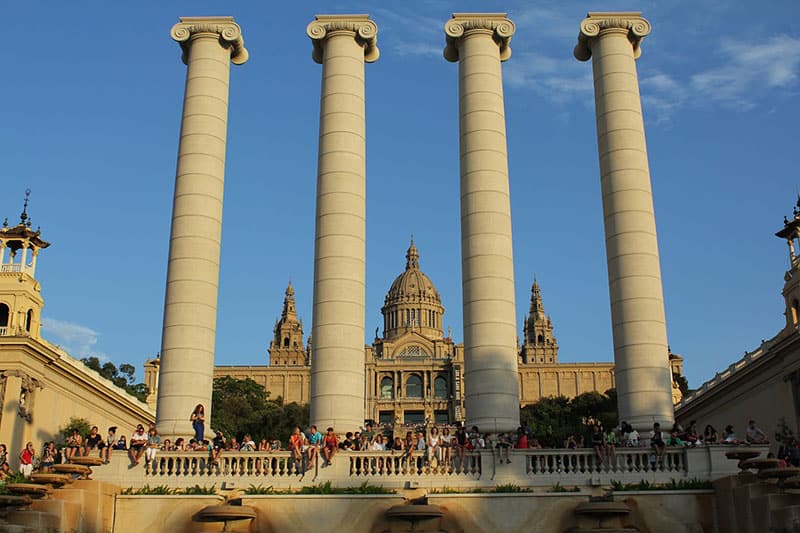
The Palau Nacional, home of the National Art Museum (MNAC)
Amongst the new markers on Barcelona’s cultural map were the fabulous Palau Nacional, a majestic palace which now hosts the National Museum of Catalan Art, the Font Magica (Magic Fountain), an impressive waterworks which spurts to the tune of classical music and still functions today, and Poble Espanyol, a mock-Spanish village designed to showcase the various regional styles of architecture on the peninsula, which has subsequently become one of Barcelona’s most popular tourist attractions.
(Keep reading for more on all of these sights below!).
The Olympics… Finally!
Also built around that time was the Olympic Stadium, designed for the 1936 Games, however Barcelona lost out to Berlin… there were plans to stage an anti-fascist Games in their place but the Spanish Civil War put an end to that.
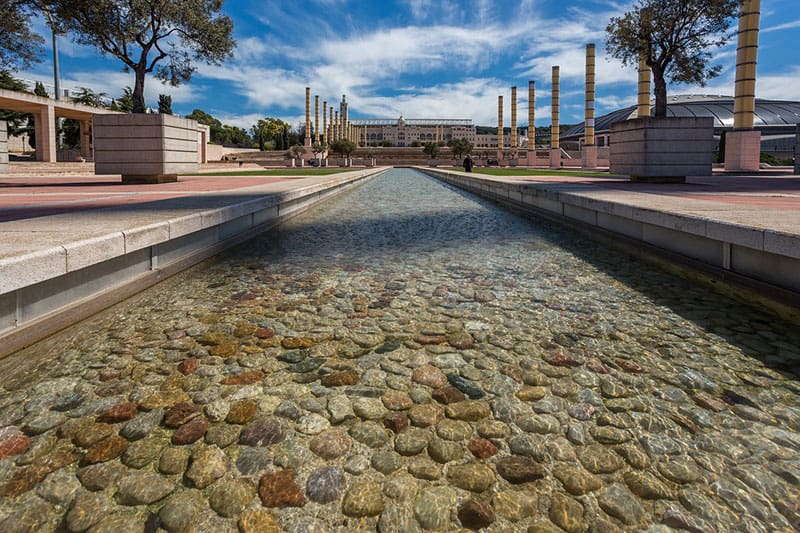
The Olympic Ring (Anella Olimpica) is well worth a gander…
Thankfully all that brick-lugging was worth it in the end however as Barcelona did finally get there Olympic Games – in 1992. Around this time Montjuic saw a second wave of exciting projects, as many of the constructions built for the 1929 Fair were renovated, such as the Olympic diving pool, and several more were added.
Most notably an ‘Anella Olympic’ or Olympic Ring of facilities was constructed, based around the renovated Olympic Stadium, which included the Sant Jordi Palace sports hall, the Picornell Olympic swimming pools (named after a Catalan waterbaby) and the Torre Telefonica Communications Tower, designed by starchitect Santiago Calatrava to transmit the Games on television.
Top 11 Montjuic Attractions
There’s plenty to see and do on the mountain. Here are the top attractions… Note: we’ve written about the Cable Car as ‘transport’ (even though it’s a popular attraction in itself!).
1. Montjuic Castle
The aforementioned fortress is not top of any Catalan’s list of favourite buildings, owing to its partisan history, however it’s fun to walk or take the cable car up to the top of the hill and explore the former military garrison. As well as checking out the parade ground and watchtower, these days you can also delve into its dungeons. Meanwhile the views over Barcelona’s commercial port are spectacular. More info here.
Montjuic Castle
Opening Hours: Mon to Sun: 10am to 6pm
Ticket Price: €5
Verdict: 8/10 – Impressive fortress with fantastic vistas
2. Joan Miro Foundation
One of Catalonia’s most famous artists, Joan Miro, is celebrated at his eponymous foundation, a vast museum of over 14,000 of his works. A true Catalan, he tried to embody the national soul in his bold abstract paintings and sculptures. A must for lovers of 20th century art.
Joan Miro Museum
Opening Hours: Tues to Sat: 10am to 6pm; Sun: 10am to 3pm.
Closed: Mondays
Ticket Price: €13
Verdict: 8/10 – Abstract art in a stunning venue
FREE with Barcelona Card
3. Poble Espanyol
It’s hard to describe this mock Spanish village in a word or two, and indeed it was scheduled to be demolished after the 1929 International Fair. However it has survived as a kind of living museum to Spanish culture, with a mix of traditional artisan shops, flamenco tablaos, restaurants, bars and even nightclubs. One thing’s for sure, there’s always something going on here! Check out their opening hours, website and more info here.
The Spanish Village
Opening Hours: Mon: 9am to 8pm; Tues, Weds, Thurs, Sun: 9am to 12am; Fri: 9am to 3am; Sat: 9am to 4am
Ticket Price: €12.60
Verdict: 8/10 – A showcase of Spain’s art and culture
4. Olympic Ring
The Olympic Ring, or Anella Olimpica, is the name given to the assortment of buildings built or renovated for the 1992 Summer Games. You can’t go inside most of them unless there’s an event (aside from sporting occasions, a lot of big name bands play in the Stadium and the adjacent Palau Sant Jordi), but it’s a beautifully landscaped zone, with water features and colonnades, and there’s also Calatrava’s epic telecommunications needle, arguably the world’s most beautiful telecoms tower, so overall it’s a great place to walk around and take some photos. Opposite the stadium you’ll also find the Olympic and Sport Museum.
Olympics & Sports Museum
Opening Hours: Tues to Sat: 10am to 6pm; Sun: 10am to 2:30pm.
Closed: Mondays
Ticket Price: €5.80
Our Verdict: 7/10 – Fun collection of sporting memorabilia
FREE with Barcelona Card
5. MNAC
I’m going to be brutal here and say the ground floor of the Museu Nacional d’Art de Catalunya makes for a pretty tedious slog. Lots and lots and lots of medieval religious iconography. But guess what, MNAC is actually my favourite museum in Barcelona thanks to its modern art collection exhibited on the 1st floor. Here you’ll find arresting works by Picasso, Dali, Ramon Casas and many more of Barcelona’s most influential artists of the late 19th and early 20th century (this period marked the city’s creative zenith!). There’s even some furniture by the peerless Antoni Gaudi himself. Tickets are reasonably priced at 12 euros, and you can buy them online (see button below!).
National Museum of Catalan Art
Opening Hours: Tues to Sat: 10am to 6pm; Sun: 10am to 3pm.
Closed: Mondays
Verdict: 8/10 – Retrospective of Catalan art that peaks in 20th century
FREE with Barcelona Card
6. Magic Fountain
*Note: currently not operating due to drought protocols*
One of the most popular things to do in Barcelona with tourists is catch a performance at the Magic Fountain, which you can find at the foot of the MNAC, just near Plaça Espanya metro station (walk past the twin Venetian Towers and keep going!). From Thursday to Sunday in the summer months (Friday and Saturday in winter), there are several 15-minute shows a night, when the 3,620 water jets go berserk to a soundtrack of classic and pop hits, lit up with every colour of the rainbow. Kitsch but fun.
7. Caixa Forum
The superb Caixa Forum is a former factory-turned-exhibition space, with a never-ending rotation of fascinating exhibitions – on topics as diverse as street photography to vampires in myth and art. The original building was designed by Puig i Cadafalch, a contemporary of Gaudi’s, and its red brick splendour is a classic example of Catalan Modernista architecture. Just 5 minutes walk from Plaça Espanya, on your way to the Magic Fountain and MNAC.
Caixa Forum
Opening Hours: Mon to Sun: 10am to 8pm
Tickets: €6
Verdict: 8/10 – Art gallery in art nouveau factory
FREE with Barcelona Card
8. Botanical Gardens
Montjuic is effectively one big park, sprawling over an entire hill, but parts of it are more special than others. That’s certainly the case with the delightful Botanical Gardens, which is home to well over a 1,000 species of Mediterranean flora and a welcome green oasis from the overcrowded city centre. You can find the gardens near to the Castle.
Jardi Botanic de Barcelona
Opening Hours: Depends on time of year, but roughly: 10am til sunset.
Tickets: €5 (free on Sundays after 3pm).
Verdict: 7/10 – Peaceful oasis on Montjuic
FREE with Barcelona Card
9. The German Pavilion
The Pavelló Alemany is a small showcase building designed by Mies van der Rohe (who also for designed the famous Barcelona Chair) for the 1929 International Fair. And then dismantled. And then rebuilt again. To the casual observer it might not be that exciting, but to architect buffs who know a cutting edge (at the time) edifice when they see one, this serene pavilion is a subject of fascination. The ticket price seems steep given there’s not much to engage with inside.
Mies van der Rohe Pavilion
Opening Hours: Mon to Sun: 10am to 8pm (til 6pm only, November to February)
Tickets: €7
Verdict: 6/10 – Subject of fascination for architecture buffs
10. Teatre Grec
Another cultural attraction built for the 1929 International Fair, the wonderfully romantic Teatre Grec (Greek Theatre) is an open air amphitheatre, just like those from antiquity. It hosts al fresco performances throughout the year, most notably during the Grec Festival that takes place each summer.
11. Montjuic Cemetery
On the far side of the mountain, and somewhat inaccessible, I wouldn’t recommend this cemetery to anyone with limited time in Barcelona. There are other more interesting, and much more convenient, sites to visit. Nonetheless, if you do have time, it’s an atmospheric place, overlooking the sea, with many marvellous, richly-decorated tombs. Several famous dignitaries are laid to rest here, including Lluis Companys, the president of Catalonia who was executed at Montjuic Castle, and the artists Joan Miro (whose museum I already mentioned!), Ramon Casas and Santiago Rusiñol.
Barcelona Card: Save Money!
For anyone keen to explore the many treasures of Montjuic, I’d strongly consider investing in a Barcelona Card, the city’s official tourist pass. The card grants you free access to Joan Miro Foundation (€13), MNAC (€12), Olympic Museum (€5.80), Botanical Gardens (€3.50) and CaixaForum (€6) – so over €40 of attractions which you can do in a single day on Montjuic. After that there’s still the Picasso Museum (€12), History Museum (€7), Egyptian Museum (€12) and many more to visit for free (full list here). The Card also includes free public transport, including free metro ride from the airport. They are valid from 3 to 5 days, activated from when you first use them. You can buy the card securely via Get Your Guide.
How Do I Get to Montjuic?
Montjuic is a massive hill that can be accessed any number of ways, especially if you’re willing to hike a bit, but for visitors there are four practical ways of getting here.
- By metro plus funicular, to the Castle side of the mountain
- By metro to the Magic Fountain side of the mountain
- By Tourist Bus, which joins both sides.
- By Electric Bike (either a rental or a guided tour).
1. Getting to the Castle Side of Montjuic
To reach this elevated coastal side of the mountain, head first to Paral-lel metro station and then board the Montjuic funicular train (you can use your metro ticket and access the funicular directly from Paral-lel metro station). The funicular is a short uphill ride and it places you within comfortable distance of the Joan Miro Foundation and the Olympic Ring.
To reach the castle from the top of the funicular, you are still faced with a rather steep walk. However the teleferic (cable car) will make the final leg of your journey easy if you decide to buy tickets.
2. Getting to the Magic Fountain side of Montjuic
The second way to arrive is to simply take the metro to Plaça Espanya, which is 5 mins walk from the Magic Fountain, and the adjacent National Museum of Catalan Art (MNAC) and the Caixa Forum. A further 5 or 10 mins uphill walk and you can reach Poble Espanyol.
3. Tourist Bus (Joining the Two Sides of Montjuic)
Those with strong legs can walk between attractions like MNAC and the Joan Miro Foundation easily enough, and bridge the two sides of the mountain. However, for those who want to cram a lot in, it is worth getting tickets for the Hop On/Hop Off Tourist Bus as some of the attractions are spaced a fair bit apart. See below for more details.
4. By Electric Bike
A rogue option to see Montjuic is by electric bike, which makes zipping up those slopes easy. If you’re good at navigating, you can rent one via Ocean Bikes Barcelona. Or if you’d rather have a guide show you around their Photo Highlights Tour reveals most of Montjuic’s best bits… as well as taking you to three of Gaudi’s UNESCO-listed works, including La Sagrada Familia.
Montjuic Transport Explained…
We explain the difference between the Funicular and the Teleferic (aka the Cable Car), and go into more details on arriving by metro or the Tourist Bus.
Montjuic Funicular
This funicular is a one track, one train system, that shuttles tourists and locals up from Paral-lel metro station, towards many of the cultural treasures awaiting on the leafy slopes of this wonderful hill. It saves you from traipsing up through the Poble Sec district and probably getting lost on the confusing winding paths at the foot of the slopes. I’d highly recommend it, it will save you a tonne of time and energy. It leaves every 10 minutes or so and the journey time is only 2 or 3 minutes. If you’ve already ridden the metro to Paral-lel you can ride the funicular as an extension to your metro journey, at no additional cost. If not you need to buy a single metro ticket.
Montjuic Cable Car
After taking the Funicular half way up the hill, the Teleferic de Montjuic Cable Car will finish the job, hoisting you up the slope right up to the Montjuic Castle. Riding this ski-style carriage is considered an attraction unto itself, and a popular one at that, so you might want to secure your tickets in advance. From this side of the mountain you can look over the whole city, as well as down over Barcelona’s sprawling commercial port. Plus, of course, you visit the castle.
Metro to Plaça Espanya
To access the attractions on the other side of the mountain take the metro to Plaça Espanya and approach between the 47m high twin Venetian Towers. Here you will find the Magic Fountain, the MNAC and you should also head to Plaça Espanya if to visit Poble Espanyol or Caixa Forum.
Tourist Bus
The red route of Barcelona’s Tourist Bus makes a total of 7 stops on Montjuic, which are, in order, Caixa Forum / Mies Van Der Rohe Pavilion, Poble Espanyol, MNAC, Olympic Ring, Joan Miro Foundation, Teleferic de Montjuic (Cable Car), Miramar Jardins Costa i Llobera. In fact you can access everything on our list of 11 top attractions with the bus, except the cemetery. For the castle, you would need to get off at the teleferic stop and take the cable car, or walk up. You can buy tickets via Get Your Guide.
Cool Montjuic Tours
Photo Highlights Tour (By Ocean Bikes)
Traipsing around Montjuic on foot is hard work, while seeing if from the top of a bus is nice (and you can stop off of course), but a really good happy medium is by electric bike. Not many bike tours dare to tread this far, but the fearless Barcelona Photo Highlights Tour shows you not only the best of Gaudi, and the city beaches, but includes a winding route through the leafy hills of Montjuic. You get to see the Olympic Stadium, Calatrava’s Needle, the Joan Miro Foundation, MNAC and Magic Fountain, as well as stopping for photos at several gorgeous miradors (viewpoints). All without breaking into a sweat, thanks to the e-bikes’ electric power-assisted pedalling!
Get Your Guide Tour Options
Get Your Guide is a simply great travel marketplace, with nearly everything you want to do in Barcelona at your fingertips. Here are their top Montjuic experiences, featuring many of the places we’ve covered in this article…
Montjuic Map
You can find all of the mountain’s many attractions on a map on this page.
About the Author



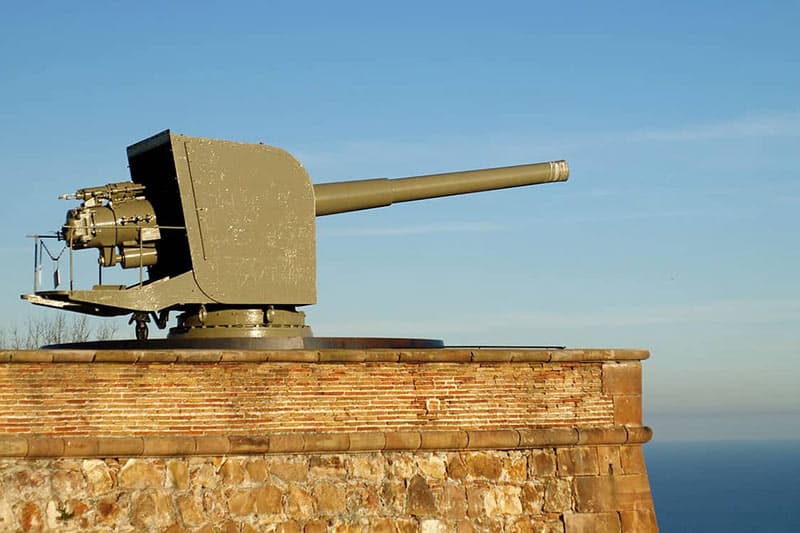
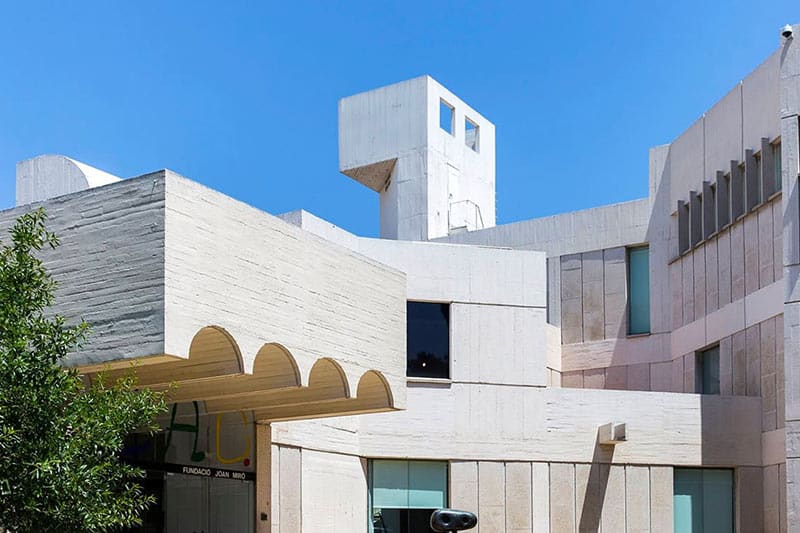
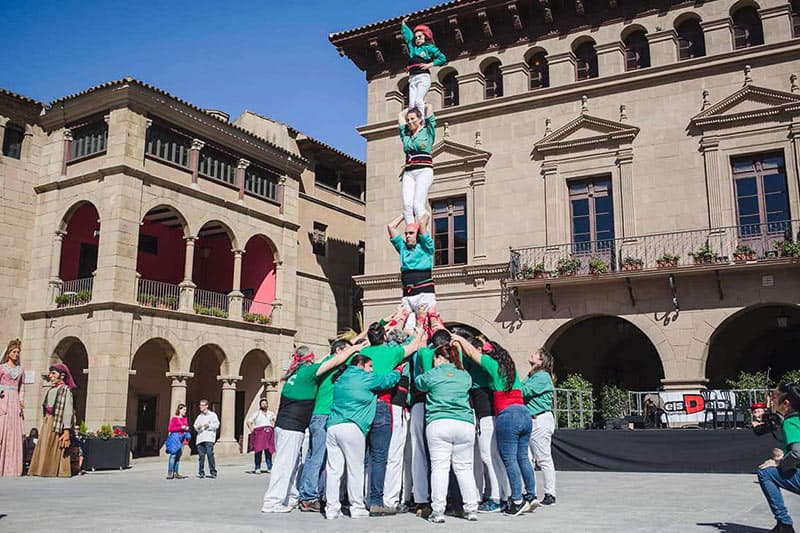
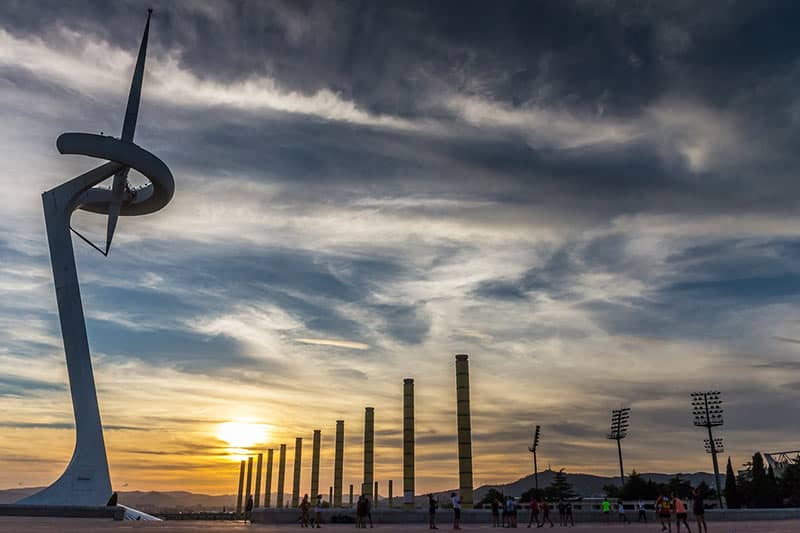
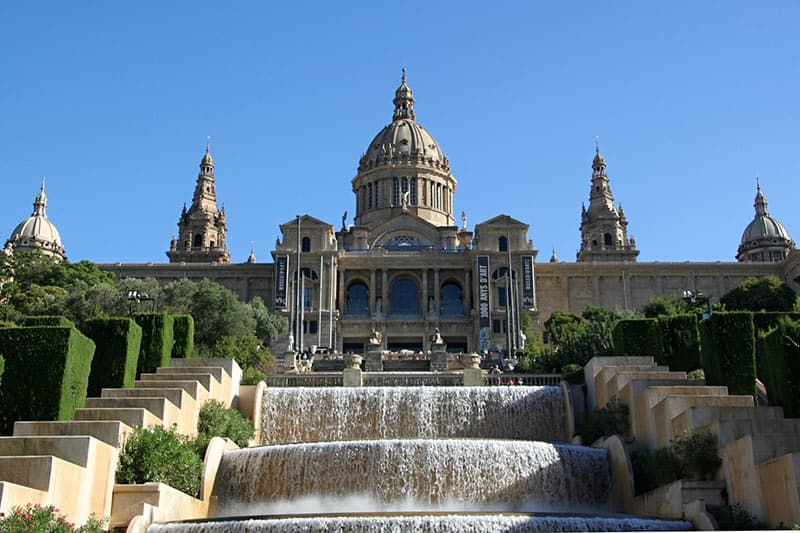
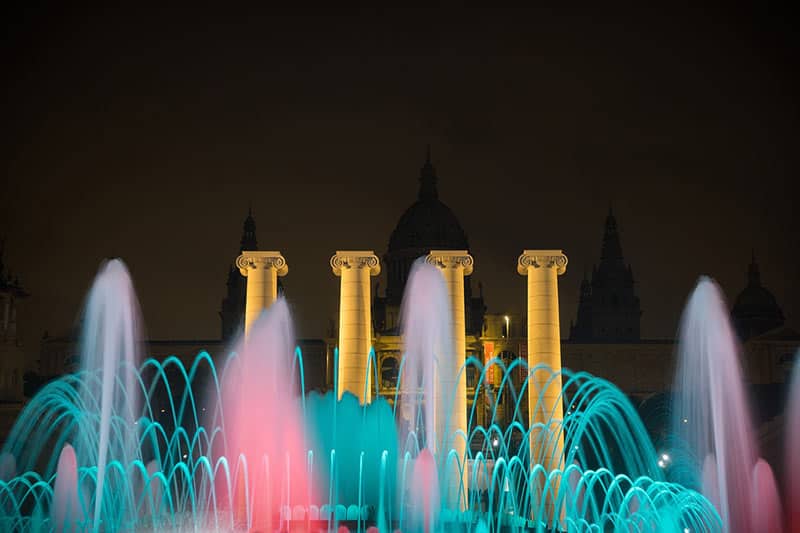
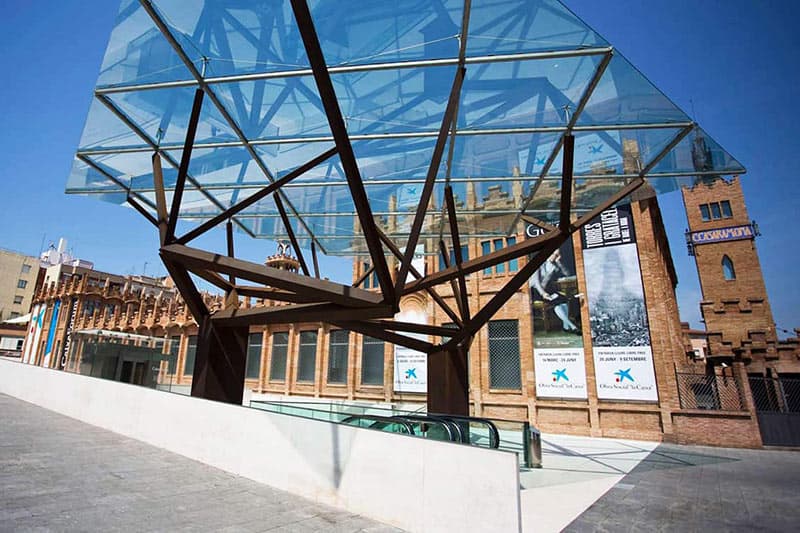
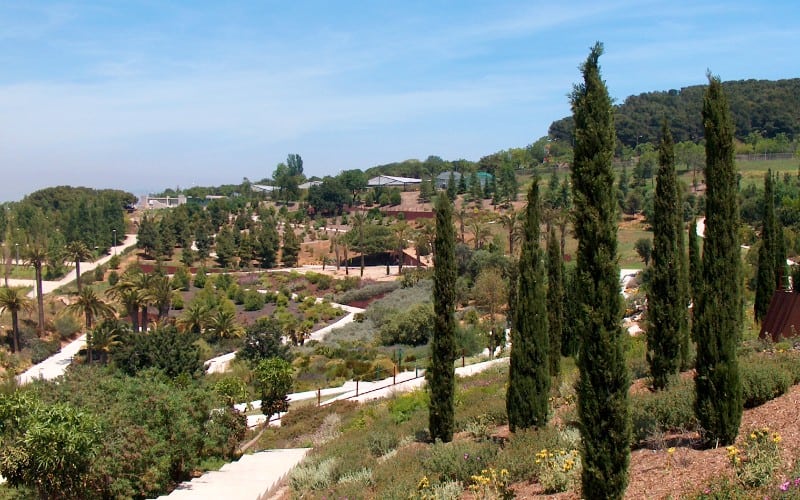
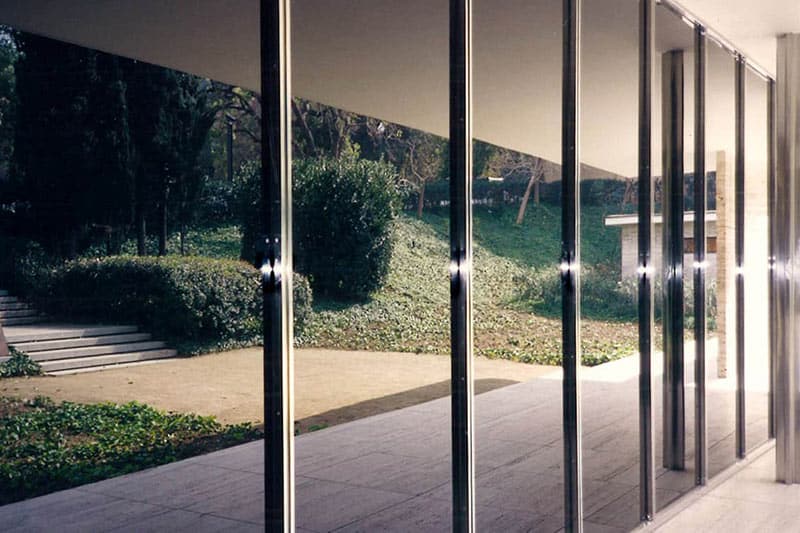
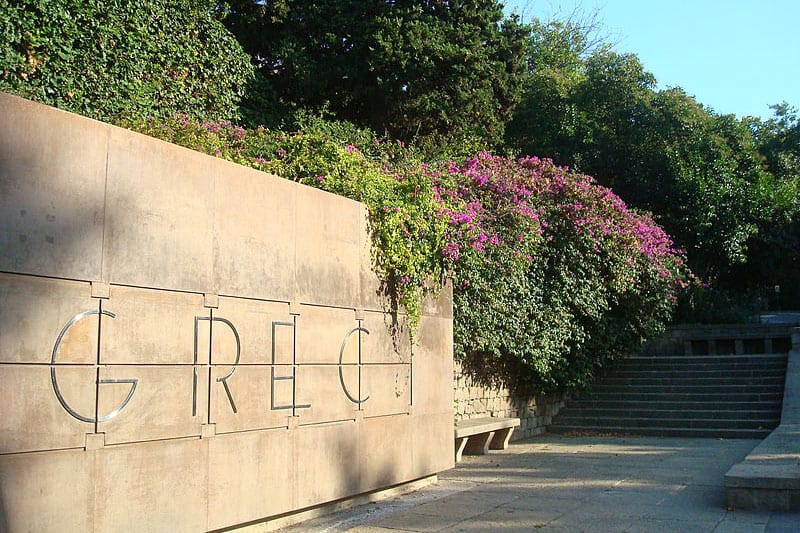
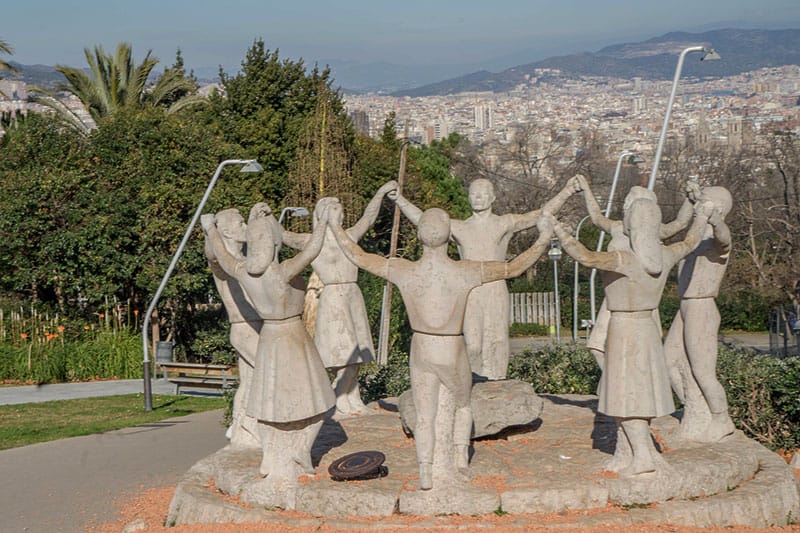
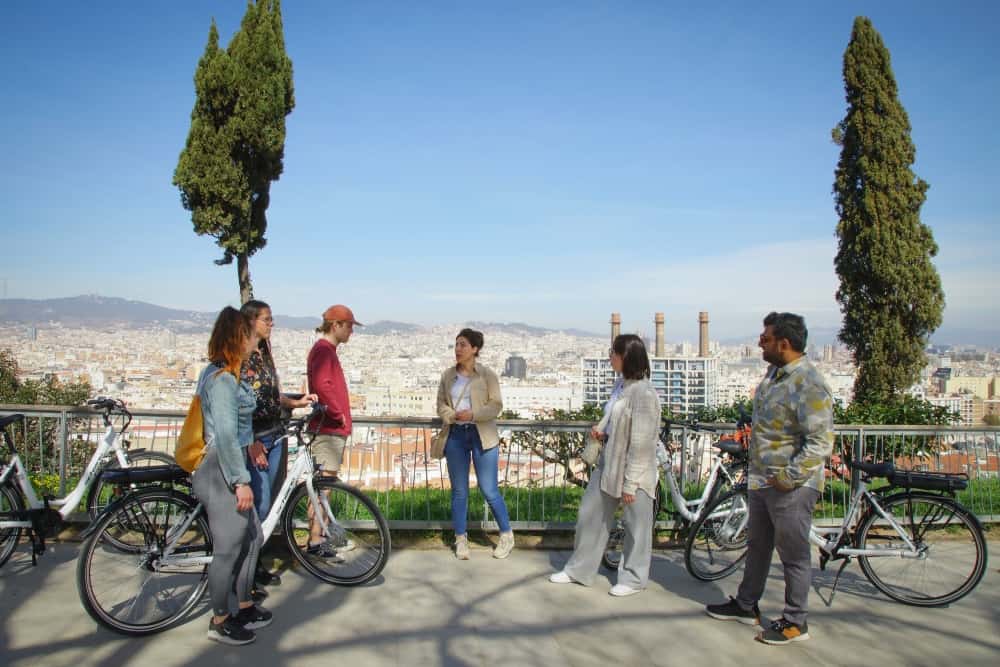
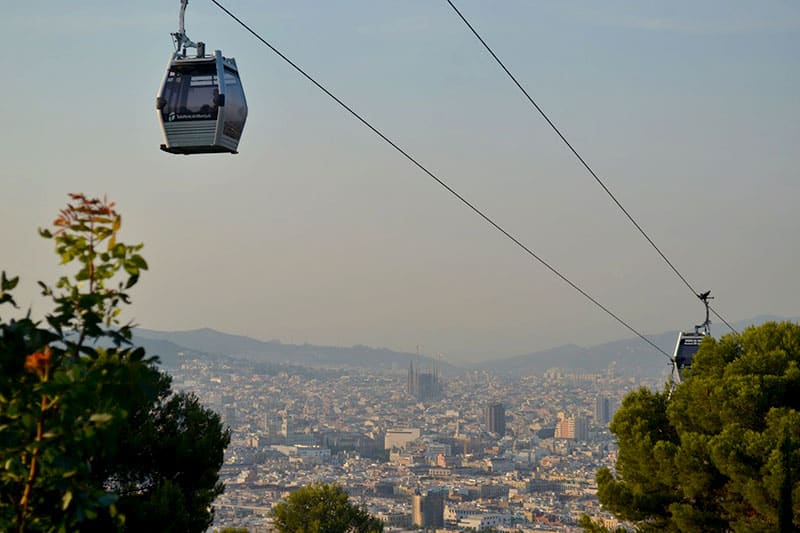
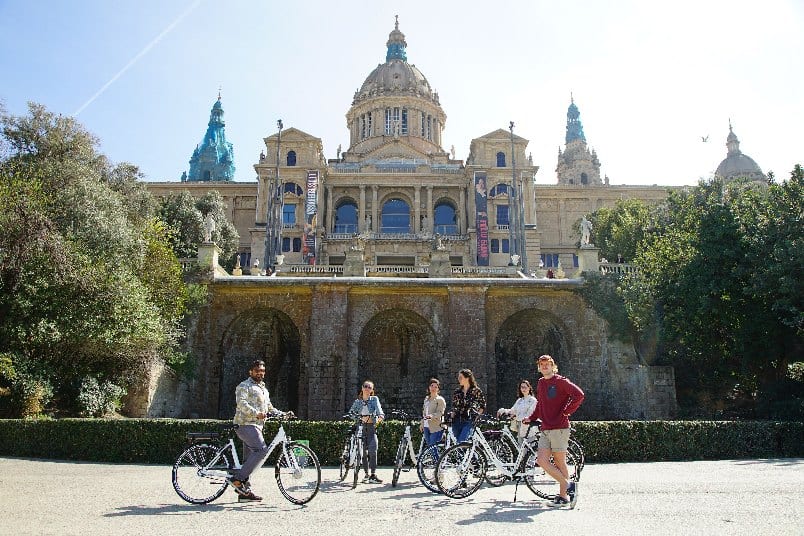
M Ganguli
Hi, If I want to watch a show of magic Fountain, do I need to buy a ticket for MNAC?
Duncan
Hi M.
No, the Magic Fountain is in an open space and free to access, no ticket required. However, due to droughts, it currently isn’t working. More info here:
https://www.barcelona.cat/en/what-to-do-in-bcn/magic-fountain/magic-fountains-show-times
Kelly
Hi Duncan. Super helpful site! Thanks! It appears that the lines to simply purchase a cable car ticket are not valid. They all direct me to multiple experience tickets. I just wan to buy a cab;e car ticket in advance. Can you help?
Duncan
Hey Kelly, thanks for the kind words!
Right, yes seems like Get Your Guide no longer list the Montjuic Cable Car for some reason! You could book instead with the official tourist website of Barcelona.
That should work!
Rabaya
Hi, Thanks a lot for the helpful information, I would like to ask, if I want to use the cable car, and want to watch the magic fountain as well, I better take the cable car one way, and get back to the city center by train or bus after I watch the fountain, because the cable car will be closed by then?
Thanks a lot
Duncan
The cable car and the Magic Fountain are on opposite sides of Montjuic, quite far apart.
Also the cable car already starts on Montjuic. It is just for the last part of the journey up to the castle. So first you have to arrive half way up Montjuic (using the funicular railway from metro Parallel).
During winter I don’t recommend you try to combine cable car and Magic Fountain. Better to do cable car and castle in the morning, when it is light. Then go back to the city for lunch / afternoon, and come back to the other side of the mountain for Magic Fountain in the evening.
Or here’s a better idea: you could take the cable car in early afternoon, then do a museum like Joan Miro or MNAC in later afternoon (which close at 6pm), and then go shopping in the nearby Las Arenas shopping mall while you wait for Magic Fountain to start.
Anum
Hi, I wanted to take the cable car up to the monjuic castle but wasn’t sure if we needed to come back down to see the fountain light show or do we have to stay up? Where does the fountain light show take place?
Duncan
Hi Anum…. Montjuic is a large sprawling hill and some attractions are very far apart. The castle is on one side (near to the coast and port) and served by the cable car, but the Magic Fountain is on the other side, near Placa Espanya and below the MNAC (National Museum of Catalan Art). It is a pretty long distance to walk between the cable car and the Magic Fountain… probably too far if I remember correctly. You should take the Tourist Bus, or a normal bus, or a taxi. Exact Magic Fountain location here: https://www.google.com/maps/d/u/0/viewer?mid=1XONC2SXWC25sy-ADEnkOnSzocA5L4UOP&ll=41.37293892431482%2C2.15073725000002&z=17
Duncan
UPDATE. Apparently it’s not too far… according to Google. Just 16 minutes walk between the bottom of the cable car (yes you should come back down) and Magic Fountain. I thought it was much much more, but I always get lost on Montjuic! Sometimes Google doesn’t deal with elevations well, and I still think it must be longer than 16 minutes… I would leave 30 minutes walking time at least. https://www.google.com/maps/dir/Montju%C3%AFc+Cable+Car,+Avinguda+Miramar,+Barcelona/Font+M%C3%A0gica+de+Montju%C3%AFc,+Pla%C3%A7a+de+Carles+Bu%C3%AFgas,+1,+08038+Barcelona/@41.3684784,2.1541263,16z/data=!4m14!4m13!1m5!1m1!1s0x12a4a2684eec5aa3:0xad9fba41fbe66ad3!2m2!1d2.1634884!2d41.368723!1m5!1m1!1s0x12a4a27086559937:0x1ec6375cbadc316a!2m2!1d2.1517402!2d41.3711603!3e2
Pamela Elmore
Hola! Hello! My daughter and I are traveling to Barcelona in late September and I wonder if you might advise us on the best way to combine a day trip that includes the cable car to Castell de Montjuic, Poble Espanyol, and then the MNAC with the Magic Fountain by nightfall. Would love your advice.
Gracias! Thank you! Pamela
Duncan
Hi Pam, I would do the cable car to the castle in the morning, then take the bus or tourist bus to Poble Espanyol, where you can have lunch in one of the many restaurants and then spend some of the afternoon checking the various museums, shops and galleries. From there you can walk to MNAC, which is open until 8pm from Tues to Saturday and spend the rest of the afternoon. From 8pm until 9:30pm you could have dinner at Oleum or chill at one of the open air bars near the Magic Fountain, as you wait for the first show to begin. Enjoy!